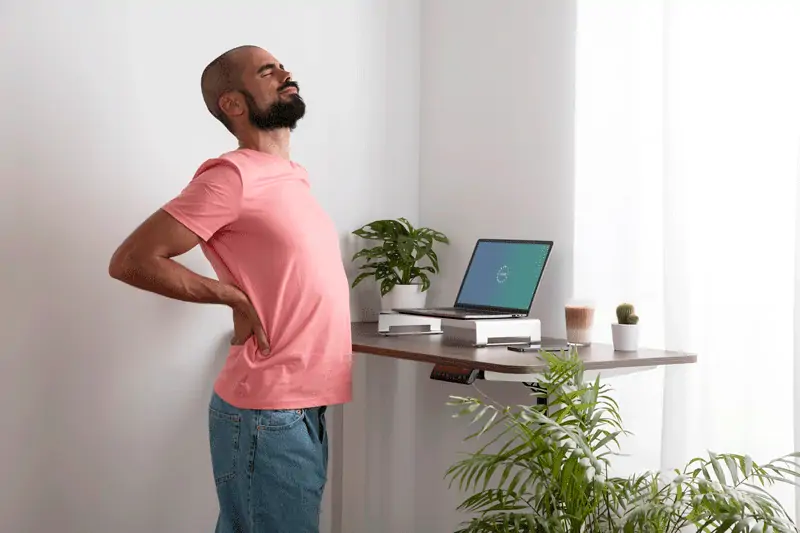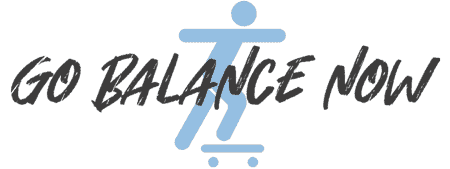Maintaining good posture is important for everyone, but it’s especially crucial for people who spend a lot of time sitting at a desk.
Poor posture can lead to back pain, neck pain, and other health problems.
Fortunately, there are many things you can do to improve your posture, including using a balance board.
Balance boards help build up strength in the core, back, and shoulders—the muscles that are most responsible for good posture.
[ez-toc]

Do Balance Boards improve posture?
The answer is yes, balance boards improve posture.
Balance boards are one of the quickest and easiest ways to build up postural muscle strength.
If you use a balance board regularly, it can help correct your posture and reduce back pain.
A good example is this Balance Board Workout, which has helped countless people improve their posture.
However, there is a limit to how much you can improve your posture with balance boards.
Balance boards are designed for improving balance and muscle strength, not fixing the health effects of bad posture.
If you have a desk job, it’s likely that you will always have some degree of poor posture.
In fact, even when you stand up, without a proper understanding of proper posture, you may still have a poor posture.
A good goal is to use the balance board so that your muscles become aware of good posture and start to replicate it themselves.
How long should you stand on a balance board?
Unlike most workouts, standing on a balance board is different for everyone.
There is no set length of time that you should stand on a balance board.
Instead, the right amount of time to stand on a balance board weight will vary depending on your body and how it feels.
It’s best to start out with just 30 seconds or so.
Then, if weight-bearing exercises are not uncomfortable, gradually increase the number of minutes that you spend using your balance board for stability training.
Once things become comfortable, users can progress to harder variations like this Balance Board Workout.
Is it bad to stand on a balance board all day?
In terms of muscle strengthening, standing on a balance board for too long is not necessarily bad.
After all, your body designed muscles to work hard.
As long as you get enough rest and allow your body to recover between workouts, there is no evidence that says you have to take breaks while using a balance board.
However, there are consequences for staying on a balance board too long without stopping or taking frequent breaks.
For example, people who spend a lot of time standing on ice skates can develop very painful bone spurs in their heels.
It’s because the bones have been overworked from being weight-bearing parts so often without relief from being weightless in ice skates
There are risks associated with standing on a balance board too long without taking time to recover.
However, many people are safe standing on a balance board for hours at a time if they follow optimal technique and take short breaks.
Is it bad to stand on a balance board with bare feet?
Bare feet are usually the preferred footwear option for using a balance board.
Even though some companies may say that shoes should be used while standing on their boards, this isn’t necessarily true for every brand.
There is no evidence that specifically recommends shoes over bare feet when performing weight-bearing exercises like standing on your Balance Board.
That said, there are several reasons why you may want to wear shoes instead of exercising shoelessly.
If you are working out at the gym and wearing shoes, you can wear shoes to do almost any balance board exercise.
The exception is when you want the extra traction of the rubber surface of a Balance Board Pro.
If you’re one who likes to work out barefoot, there are reasons why it may be best not to use a balance board because you want to feel as much as possible under your feet during workouts.
On the other hand, there are several benefits for exercising shoelessly:
- Exercising shoelessly lets you work with better stability by letting your muscles sense every bump and contour on the ground that’s uneven or rough.
- You can also control how hard your legs and feet push into the ground when you’re on the balance board.
- People with less arm strength may also find it easier to keep their balance while exercising shoelessly than while wearing shoes.
- However, no matter how you choose to use your balance board, there is no evidence that says using a balance board barefoot is necessarily better than using footwear for stability training exercises.
- What does the science say about standing on a balance board?
- There are studies on how weight-bearing can affect people’s bone density over time.
- Additionally, there are several studies on “core” muscle strengthening and injury prevention by doing core workouts like planks.
However, there is no conclusive evidence that demonstrates any kind of “core” strengthening by standing on a balance board.
That’s because the core is an imaginary line in your abdomen and back that extends to both sides of your body.
Since you’re using the muscles in your legs and feet when you stand on a balance board, it’s unlikely that they will develop more strength than when doing the same exercise while not standing on a Balance Board Pro or another stability trainer.
There isn’t enough scientific evidence to prove whether or not standing on a balance board all day has benefits for muscle strengthening or improving overall health.
Are standing desk balance boards good for you?
If you have a standing desk, then it’s possible that one of these balance boards will benefit your overall wellness.
Your feet are more likely to hurt if you use them all day long.
You may not realize this because the pain might be small, but it’s still there.
When working on a computer or laptop, people tend to slouch and lean forward for extended periods of time without getting up often enough to stretch their backs and legs out.
A standing desk can force people to maintain an upright posture when they’re using their computers at work every day.
Using a Balance Board Pro with a standing desk lets you get even healthier muscle development in your core and back through workouts while you work.
What type of balance board is best?
Here is a list of some of the most popular balance boards on the market:
- Yes4All Wobble Balance Board – Best Overall
- 4TH-BEE Core Balance Board – Best Value For Money
- URBNFit Wobble Cushion Balance Board – Most Useful
- Fitlaya Fitness Balance Board – Best For Your Wallet
- EveryMile Wobble Board – Best For Kids
- FEZIBO Wooden Wobble Board
- StrongTek Wooden Balance Board
- Revolution 101 Balance Board
Final Thoughts
Balance boards are a great tool for improving your posture and preventing back pain, neck pain, as well as other health effects.
The type of balance board you will use depends on the exercises you want to do and if it is best to wear shoes or not when doing so.
If you have a standing desk at work, one of these tools may also be useful in helping improve your overall wellness by aiding with muscle development in your core and back through workouts while working.

